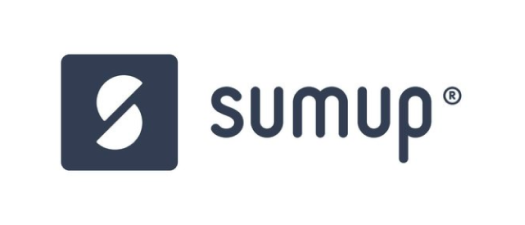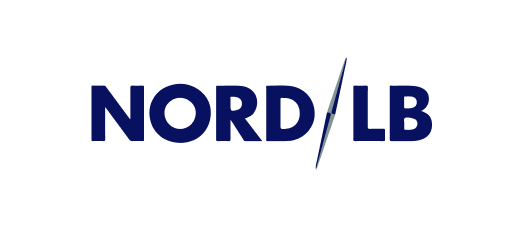"Our vision for our data strategy is to use data effectively and efficiently across the organization to deliver value for our business and for our customers. We’re using Confluent to leverage data to create business value and help SumUp become a more data-driven company."
Vinod Chelladurai
Principal Data Engineer, SumUp
Today’s small businesses have unique requirements but fewer resources than that of midsize or enterprise organizations. Since its inception in 2012, fintech company SumUp has provided these small businesses with an easy-to-use payments solution designed to level the playing field.
Over the last decade, the company rapidly transitioned from a lean startup to a late-stage scaleup capable of providing its merchant customers with a variety of robust services. As SumUp grew, the variety of internal systems, customer-facing products, and business functions it accumulated gradually made its data more siloed—making it more difficult to access and process at the speed the business demands.
To realize its vision toward data-driven decision-making, SumUp has implemented data mesh principles—including federated governance, data as a product, self-service infrastructure, and domain ownership—to modernize its architecture and its approach to data management. Over the last two years, Confluent Cloud has become integral to provide internal teams with the trusted, shareable data products they need to accelerate innovation and business growth.
A Stagnating Data Strategy with Centralized Data Management
Today, SumUp card readers and point-of-sale (POS) systems allow more than 4 million businesses to accept payments across 36 markets worldwide. As the company has grown, teams within the company—including the data platform team—have looked for ways to become more data-driven and build better products for merchants.
In years past, internal stakeholders who needed to access data to create new business reports, build analytics tools, or launch other data-driven use cases had to go through the data platform team. Over time, the volume of these requests grew steadily, and the overwhelmed data platform team inevitably became a bottleneck to generating timely insights. And as a result, SumUp needed a new approach to data management.
Why SumUp Chose to Build a Data Mesh on Confluent Cloud
Before adopting data streaming, SumUp used a three-tier architecture, consisting of a presentation and application layer, business layer, and development layer. However, to support a better user experience for merchants, the data platform team wanted to implement data mesh principles by migrating to an event-driven architecture and moving away from traditional publish-subscribe messaging services.
As SumUp began to evaluate distributed messaging systems that could democratize data management, the team quickly decided on Apache Kafka. Compared to other streaming technologies, Kafka’s robust open source community, widespread adoption, and proven success seemed like the answer to their data management problems.
The team was able to successfully standardize how they build streaming data pipelines with Kafka but soon realized that a managed service would allow them to focus on creating a truly decentralized data model. After evaluating available Kafka services, SumUp chose Confluent Cloud to take advantage of its reliability and ease of use.
Migrating to Confluent Cloud allowed the data platform team to make significant strides in implementing data mesh principles. The fully managed data service enabled the data platform team to seamlessly deploy Kafka across on-premises and cloud environments hosted by AWS.
Confluent’s extensive Kafka expertise made it easy to deliver a self-service infrastructure for internal users—without the operational burden of a self-managed platform. At the same time, Confluent Cloud made it significantly easier for product teams to develop customer-facing applications using real-time data streams.
Decentralized Data Ownership with Self-Service Data Streaming
Giving teams the ability to build and own standardized, consumable data streams was central to the data platform team’s long-term vision for SumUp. Realizing this goal would mean that previously siloed information could be turned into reusable data products, ready to leverage for new use cases.
To successfully make this shift, the organization needed to implement domain-driven ownership and federated governance, alongside its self-service infrastructure. This meant that the teams producing or managing incoming data would build and own the resulting data product while the data platform team oversaw data standards and policies.
Why Confluent Was the Right Choice to Realize SumUp's Data Strategy
SumUp needed a way to reduce the operational burden of using streaming services while also ensuring they had a very stable data streaming platform for mission-critical use cases.
With Confluent Cloud, the data platform team could leave their infrastructure in expert hands and focus on bringing their decentralized data model to life—enabling other teams to investigate and implement new data streaming use cases.
Before making this transition, data engineers on the data platform team would intake requests from stakeholders, prioritize projects based on capacity, and then begin the painstaking process of understanding and fulfilling the unique data requirements of each request.
For analytics use cases, this process involved:
Identifying data sources and sinks
Preparing data models based on reporting or analytics needs
Building data pipelines to connect into data warehouse architecture
Helping stakeholders create reports based on the resulting data
As the company grew and introduced new products, it was challenging for the data platform team to scale up data infrastructure as needed. Even when they began using and launching new pipelines with an event-streaming architecture, the data platform team’s ability to scale its services across the organization was limited by their capacity for building new pipelines.
At this stage, they could only prioritize a handful of projects per quarter—which meant valuable use cases were often delayed again and again. In contrast, using Confluent Cloud allowed the data platform team to spend more time building trusted, shareable data products and less time managing data infrastructure and troubleshooting operational issues.
How SumUp Leveraged Confluent Cloud's Enterprise-Grade Capabilities
Confluent Cloud’s serverless, cloud-native capabilities allow the data streaming platform to work seamlessly with SumUp’s microservices architecture, hosted in Amazon RDS instances for PostgreSQL. As a result, internal teams could take advantage of the self-service capabilities of Confluent Cloud immediately.
Today, individual teams at SumUp independently publish streaming data directly to Confluent Cloud. This allows other teams to consume those streams to enrich existing products or develop new ways to make SumUp more data-driven.
SumUp’s data platform team now uses Confluent Cloud to provide Kafka platform services to ensure consistent data quality when sending messages to end systems for data modeling. In addition to open source features like Kafka Connect, the team also takes advantage of Confluent’s unique capabilities:
Enterprise-grade security and governance (e.g., role-based access control)
Unrestricted developer productivity (e.g., Schema Registry)
Cloud-native performance and elasticity (e.g., Confluent for Kubernetes and the Confluent Operator)
More Than 20 Teams Across SumUp Are Now Using Data Streaming
By implementing data mesh principles with Confluent Cloud, the data platform team has made valuable data streams more accessible, reliable, and shareable. Across business functions, teams now have a common platform for publishing, transforming, and sharing the streaming data that SumUp needs to become more efficient and deliver better products for its merchants.
Accelerating Data Streaming Adoption with a Decentralized Data Model
With Confluent, teams implementing Kafka use cases have the ability to easily build and share data products without having to wait on the data platform team for support. Now, when a team needs to request access to data, they can simply submit the request to the data owners directly and ask them to publish data to Confluent Cloud so data engineers on the responsible team can build reusable data products.
Removing the data management bottleneck not only allows more teams to integrate data streaming into their customer-facing products, reporting systems, and analytics use cases, but it also allows the data platform team to focus on higher-value work like delivering more Kafka platform services to the growing number of teams using Confluent Cloud at SumUp.
Implementing Critical Use Cases Across the Business
Now, more than 20 teams across SumUp use Confluent Cloud to pursue advanced, mission-critical use cases:
Global Bank tribe: This cross-functional team is responsible for operating SumUp banking and merchant payment services. Using Confluent Cloud allows the Global Bank tribe to bolster its data distribution capabilities between microservices that help update transaction records that then get pushed to merchant accounts in real-time. By creating reusable data products with real-time transaction data, the team has seen improved resilience in use cases that process massive volumes of data every day—such as 24/7 monitoring, fraud detection, or personalized recommendations based on merchant account activity—resulting in a better experience for SumUp merchants and strengthened trust.
Customer relationship management (CRM) team: The CRM team uses Confluent Cloud to provide information about customers and the products they use to operational teams within the CRM system in real-time. Moving away from batch processing and with a shift toward real-time data streaming enables a more seamless customer experience and allows the CRM team to share its streaming data across the organization.
Risk data and machine learning platform team: This team manages connections between near-real-time streaming aggregation processes and the SumUp feature store. Using Confluent Cloud enables the team to standardize data pipelines that feed their machine learning models, allowing these models to make decisions based on the latest data and provide more value to SumUp teams and customers.
What's Next for SumUp and Confluent Cloud?
Today, more departments at SumUp are actively investigating new data streaming use cases that can add value to the merchant experience and help make the organization more efficient. Having Confluent Cloud as their data streaming platform means the data platform team can easily onboard new users.
In the near future, the data platform team plans to include multi-region clusters in its data mesh rollout. Currently, the company’s infrastructure is mainly focused on Europe. Now that SumUp has expanded into the United States, Australia, and Latin America, the data platform team plans to take its architecture global as well.
Combined with SumUp’s federated governance and self-serve infrastructure, these multi-region deployments will enable the product teams to meet all governance and regulatory requirements as they serve customers in these countries.
The data platform team also plans to use real-time stream processing and data sharing with tools like ksqlDB and REST Proxy. As more teams across SumUp begin to use Confluent Cloud, taking advantage of these capabilities will only make it easier for internal teams to use data products to:
Refine business processes and reporting with ongoing insights
Optimize utilization of IT resources and backend systems
Deliver real-time applications and services that merchants love
Get Started With Confluent Today
New signups receive $400 to spend during their first 30 days.



